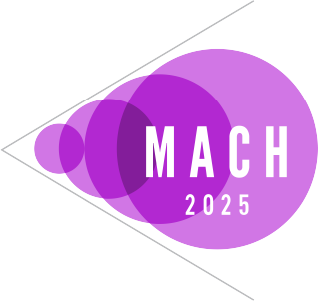
Tao Sun
Associate Professor, Department of Materials Science and Engineering
University of Virginia
Structure dynamics in laser additive manufacturing revealed by high-speed x-ray imaging
After more than three decades of intense research and development, laser powder bed fusion (LPBF) has advanced from a handy rapid prototyping tool for shortening the design cycle towards a manufacturing technology for producing end-use metallic components. While some industries fully embrace LPBF now, others are taking cautious steps to integrate it into their product lines. As a primary metal additive manufacturing (AM) technique, LPBF is capable of fabricating parts with extreme geometric complexities and fine features, which cannot be rivaled by conventional manufacturing or even other AM technologies. However, LPBF still needs to improve in a few areas before it can reach its full potential as a disruptive technique. In a LPBF process, a high-power (100s W) laser beam (diameter of 50~100 mm) scans (speed of m/s) across a thin layer (30~100 mm) of powder bed to locally melt the metal powder (5~50 mm) and fuse them with previous laser. As a manufacturing process, LPBF is relatively slow, primarily because of the time consumed for powder bed recoating. In the meanwhile, the fast laser scanning creates far-from-equilibrium thermal conditions which trigger transient phenomena and complex structure dynamics, including but not limited to, fluctuations of melt pool and vapor depression, powder entrainment and spattering, rapid solidification and phase transformation, etc. These highly dynamic processes often lead to build anomalies such as dimension inaccuracy and structure defects. Therefore, the co-existing “fast” and “slow” characteristics render LPBF to be unfit for producing parts with strict quality and quantity requirement, particularly those used in risk-averse sectors.
Understanding the laser-metal interaction and the dynamic interplays between the solid, liquid and gas phases involved in LPBF holds the key for improving its capability for building parts faster and more reliably. Recently, we applied high-speed synchrotron x-ray imaging technique to probe the structure dynamics in LPBF with unprecedented high spatial and temporal resolutions. The high-flux high-energy x-rays afforded by Advanced Photon Source allowed us to directly visualize the morphological evolution of the melt pool and vapor depression zone during scanning laser melting. With these time-resolved quantitative measurements, the conduction, transition, and keyhole modes laser melting were re-defined with rigorous physics underpinning. Also, novel mechanisms were discovered that explain the generation of fast spatters and small keyhole pores. In this presentation, I will introduce the new knowledge we learned from operando synchrotron x-ray experiments on laser AM, and highlight the connection between the fine structures on keyhole walls with some extreme structure dynamics in LPBF.
BIO: Supervised by Prof. Vinayak Dravid and Dr. Jin Wang, my doctoral research at Northwestern University and Argonne National Laboratory was focused on fabrication and characterization of nanostructured oxides. In 2010, I started my postdoc research at the X-ray Science Division (XSD) at Argonne, working on coherent electron scattering (with Dr. Murray Gibson) and coherent x-ray scattering (with Dr. Jin Wang) techniques. In 2012, I joined the Imaging Group of XSD as a staff scientist, developing and applying high-speed x-ray imaging/diffraction techniques for studying highly dynamic irreversible/non-repeatable material processes. In 2019, I started my academic career as an associate professor in the Department of Materials Science and Engineering of UVA.
